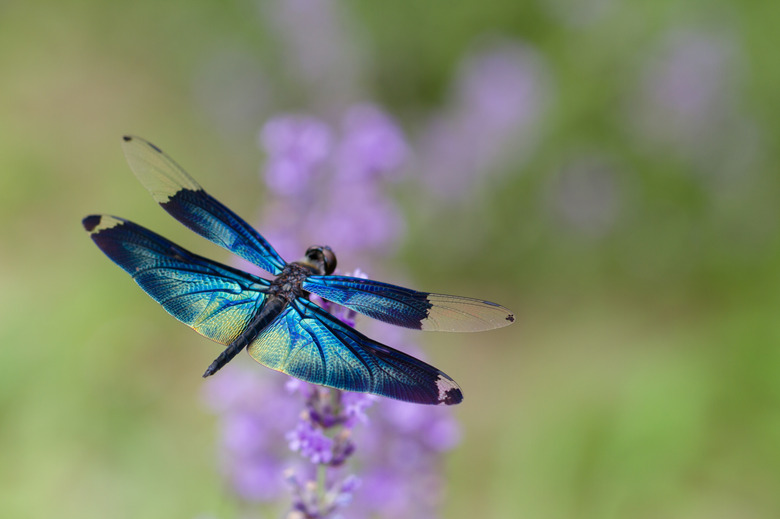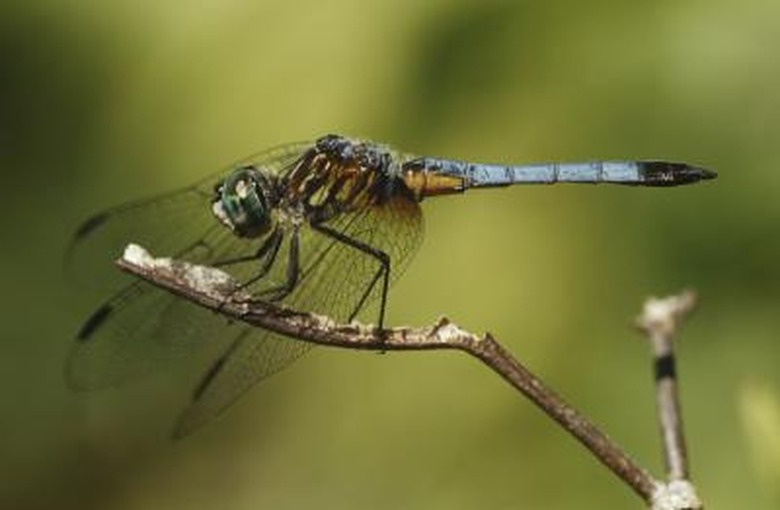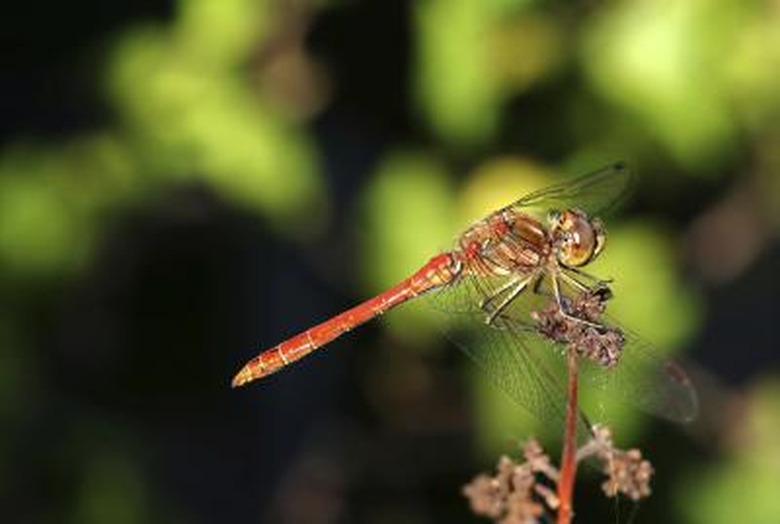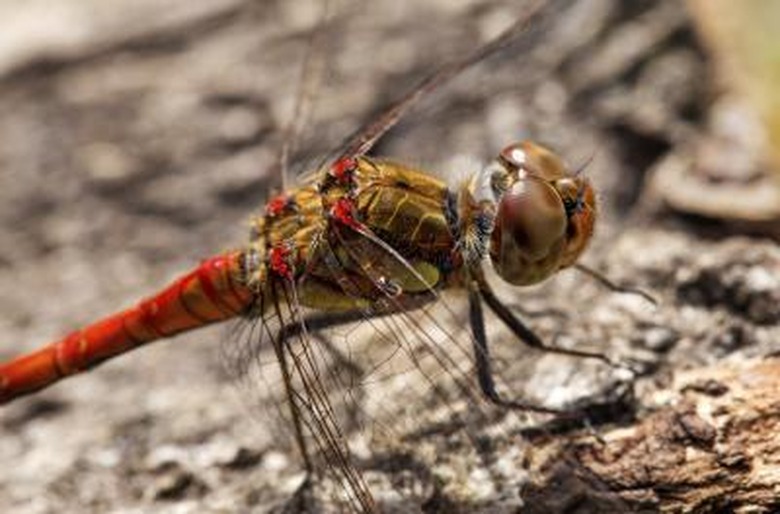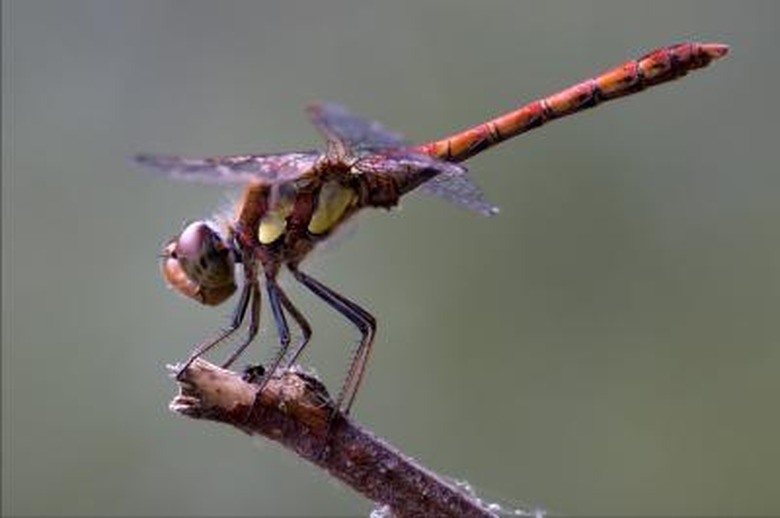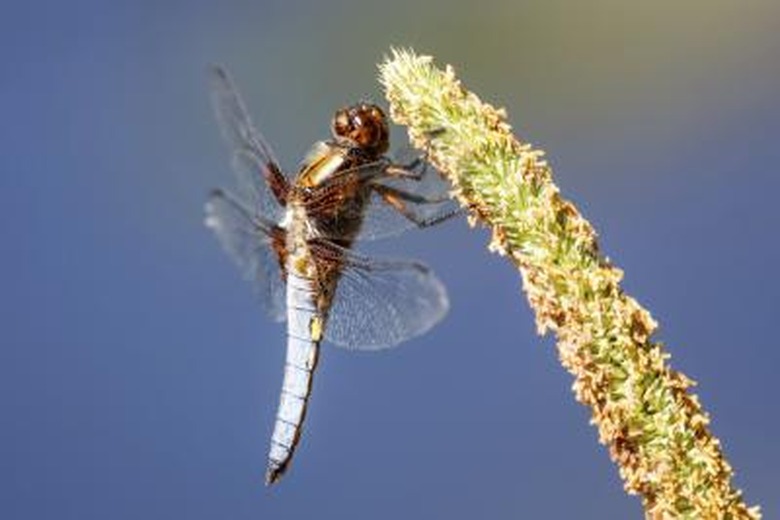Life Cycle Of A Dragonfly
Dragonflies have been around for 300 million years, making them one of the oldest species of insects in the world. Dragonflies have been so successful over the years that the only difference between modern and ancient dragonflies is size. One of the secrets to their success is how they mature. Dragonflies have three stages to their life: egg, nymph and adult. The length of each stage depends on the species of dragonfly. Dragonflies in tropical regions typically spend less time in each stage than dragonflies in temperate regions.
TL;DR (Too Long; Didn't Read)
The life cycle of a dragonfly usually includes three stages, which are the egg, nymph and adult phase.
The Egg Stage
The Egg Stage
The life cycle of a dragonfly starts with eggs. After breeding, a female dragonfly selects a pond or marsh in which to lay her eggs. Dragonfly eggs are only laid in still water, as eggs laid in quickly moving water will wash into fish-feeding areas.
Female dragonflies lay their eggs on submerged aquatic plants, mud banks submerged in water, or if they can't find a better spot, directly in the water. Depending on the species, a female can lay hundreds or thousands of eggs during her lifespan.
In tropical regions, dragonfly eggs may hatch in as little as five days. In temperate (areas where winter temperatures drop near or below freezing) regions, dragonfly eggs usually won't hatch until the following spring.
In tropical regions, two to three generations of dragonflies may mate and lay eggs each year. In temperate regions, usually only one generation mates and lays eggs. For dragonflies living in temperate regions, mating and egg laying typically occurs in mid to late summer.
The Nymph Stage
The Nymph Stage
When dragonflies hatch they are called nymphs. Dragonfly nymphs are voracious predators that have no resemblance to their adult forms. They molt (shed their skin) up to 12 times, depending on the species, and can spend as long as four years as nymphs.
Dragonflies living in tropical regions spend less time in the nymph form while dragonflies living in temperate regions will spend longer as nymphs as the onset of winter delays maturation.
Dragonfly nymphs are aquatic, living in ponds and marshes until emerging to molt for one final time. During the final molting, the nymph's skin splits and the nymph emerges as an adult dragonfly. Dragonfly nymphs are hemimetabolous, meaning they don't form a cocoon or pupate before emerging as an adult.
The Adult Stage
The Adult Stage
After the final molt from nymph to adult, occurring in late spring or early summer in temperate regions and at any time of the year in tropical regions, most dragonfly species spend the next month fully maturing. Their gonads (sex organs) finish developing, their color becomes brighter with their final markings emerging and they disperse, sometimes hundreds of miles, from the pond or marsh where they developed.
Adult dragonflies are also voracious predators eating small insects, primarily mosquitoes and flies, which they catch while flying. Dragonflies can hover, fly backwards, forwards and sideways.
Once fully developed, a female dragonfly can mate with several males before she is ready to lay her eggs. Both female and male dragonflies only live two to four months as adults before dying.
The Dragonfly Life Span
The Dragonfly Life Span
From egg to adult, a dragonfly can live for five years before dying. Dragonflies in tropical regions don't live as long as dragonflies in temperate regions. The reason? Dragonflies in temperate regions overwinter as eggs or nymphs for several years before finally emerging as adults.
How to Attract Dragonflies
How to Attract Dragonflies
Dragonflies as nymphs and adults are voracious predators eating anything they can catch, including adult and larval mosquitoes. This is why any permanent water feature will attract dragonflies
To encourage dragonflies to lay eggs in your pond, grow reeds and lilies that emerge from the water to give the female a place to perch while laying her eggs. Remember fish can eat dragonfly nymphs and eggs. Sectioning off part of the pond from fish will give nymphs a safe place to mature.
Cite This Article
MLA
Contributor, . "Life Cycle Of A Dragonfly" sciencing.com, https://www.sciencing.com/life-cycle-dragonfly-5398237/. 19 April 2018.
APA
Contributor, . (2018, April 19). Life Cycle Of A Dragonfly. sciencing.com. Retrieved from https://www.sciencing.com/life-cycle-dragonfly-5398237/
Chicago
Contributor, . Life Cycle Of A Dragonfly last modified March 24, 2022. https://www.sciencing.com/life-cycle-dragonfly-5398237/
